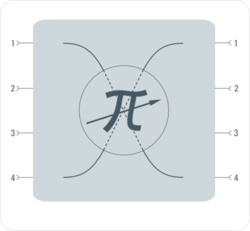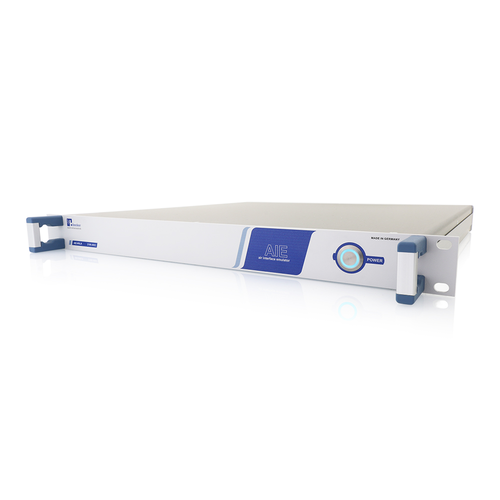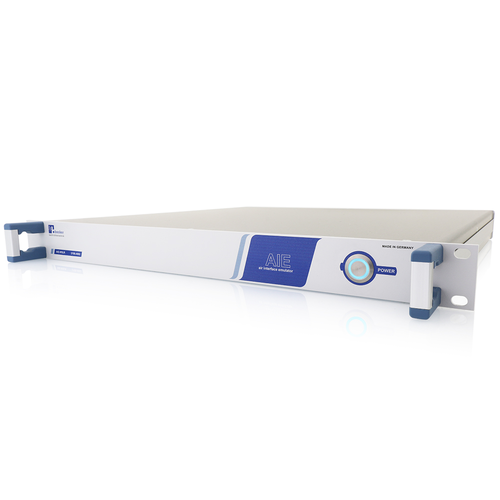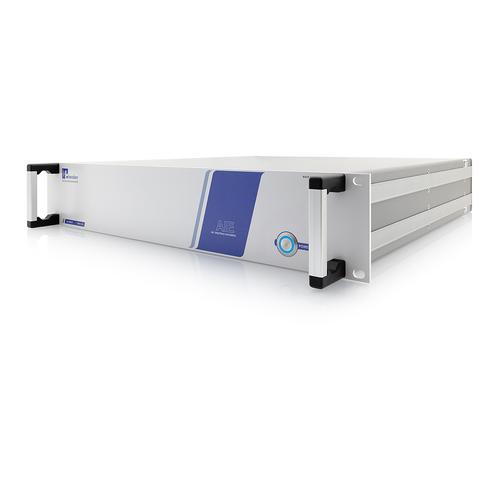Test Solutions for Mobile and Wireless Communication
Emulation of Air Interfaces
Testing communication systems in the field necessary but cumbersome and expensive. Whenever possible the testing has to be transferred to the laboratory environment, in order to achieve reproducible and reliable results. Emulating the propagation of the signals over the air can be achieved by using air interface emulation devices connected to the communication systems in conducted mode, modifying the physical channel on RF level: amplitude, phase, delay. BNT offers various models, targeting typical situations even with more than two communication terminals involved (hand-over testing, V2X scenario testing).
Cost Optimization
The deep integration of radio networks into our daily lives has led to a continuous increase in the complexity of devices, not least due to the ongoing development of mobile communication standards. In particular, the expansion of the use of mobile communication components in vehicles contributes to enhancing driving comfort and safety. However, these developments require intensive testing of newly developed components to ensure their compatibility with various transmission standards.
To save costs in the design and qualification phase of mobile communication components, efficient strategies are crucial. One approach is to optimize and automate testing processes to reduce the time involved. The use of state-of-the-art simulation technologies allows for the realistic reproduction of test scenarios and the conduct of extensive compatibility tests.
Becker Nachrichtentechnik offers diverse solutions for the reproducible simulation of radio channels under laboratory conditions. All devices can be conveniently integrated into industry-standard rack systems and can be controlled either through a user-friendly interface or integrated into higher systems through simple SCPI commands.
AIE-X | Air Interface Emulator
The AIE-X series is an n to n port radio field emulation for generating handover test scenarios. These devices can be used to individually map field scenarios of complex transmission channels such as MIMO. The frequency range of the device extends from 500 MHz to 9000 MHz and therefore also supports the latest WLAN standards Wi-Fi 6E (IEE 802.11ax) and Wi-Fi 7 (IEE 802.11be).
|
|
AIE-4X4LR |
|
Frequency range |
500 MHz…9000 MHz |
|
Number of channels |
4 x 4 (4 Inputs, 4 Outputs) |
|
Insertion loss |
21 dB @ 0 dB ATT / @ 2 GHz |
|
Attenuation range |
0 … 63.5 dB (0 ... 127.0 dB) |
|
Attenuation resolution |
0.25 dB |
|
Port load capacity |
+33 dBm |
|
LAN interface |
✓ |
|
USB interface |
✓ |

4X4 Channel Air Interface Emulator, 500…9000 MHz
step size 0.25 dB 500 ... 9000 MHz attenuation range 0 up to 127.0 dB 4X4 ports
AIE-W | Cellular and Car-to-X Emulator
The AIE-W series is a radio field simulator for Car-to-X applications. Each RF port is designed for bidirectional operation and is connected to each of the remaining ports via adjustable attenuators. The device is designed to operate from 500 MHz to 9000 MHz and therefore also supports the latest WLAN standards Wi-Fi 6E (IEE 802.11ax) and Wi-Fi 7 (IEE 802.11be).
|
|
AIE-W5LR |
AIE-W8LR |
|
Frequency range |
500 MHz … 9000 MHz |
500 MHz … 9000 MHz |
|
Number of channels |
5 |
8 |
|
Insertion loss |
23 dB @ 0 dB ATT, 2 GHz |
32 dB @ 0 dB ATT, 2 GHz |
|
Atennuation range |
0 … 127.0 dB |
0 … 127.0 dB |
|
Attenuation resolution |
0.25 dB |
0.25 dB |
|
Port load capacity |
+33 dBm |
+33 dBm |
|
LAN interface |
✓ |
✓ |
|
USB interface |
✓ |
✓ |
|
Trigger input |
✓ |
✓ |

Frequency Range
For universal use, the operating bandwidth should be as large as possible. The system should be suitable for all components of communication standards such as 5G-LTE, Wi-Fi 6E (IEE 802.11ax), Wi-Fi 7 (IEE 802.11be).
Port Load Capability
The load capacity of the HF ports should be adapted to the connection of mobile phones and wireless network devices.
Accuracy of Adjustment
Reproducible results will ensure by fine resolution with high accuracy in adjustment.
Port-Decoupling
High decoupling properties of the RF ports ensure a sufficient suppression of adjacent test pieces to avoid mutual interference.
Remote Control
Via remote control interfaces, such as Ethernet LAN or USB, the radio field simulations can be integrated into automatic test sequences. Many devices are additionally equipped with web interfaces, which provide a location-independent control of the devices without additional software on the user's side.
Robust Design
In production and development, high quality and availability of the RF signal is immeasurably. The components comply with these requirements and are designed for longstanding operation.
Latest modification: 18.12.2023











